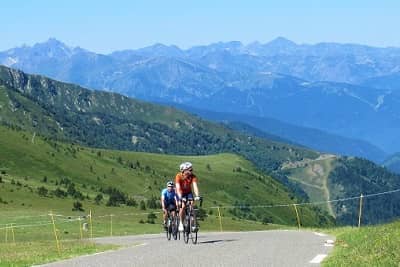The Best Places for Cycling in The Pyrenees
The Pyrenees are a vast mountain range, stretching for hundreds of miles from the Atlantic to the Mediterranean Sea and spanning three countries. Because of the size it can be quite
daunting when planning a summer cycling holiday to the area. It can be difficult to know where to base yourself, to make sure
you get to ride the most enjoyable climbs.
In this guide we will be looking at some of the most popular parts of the Pyrenees, and assessing how good each one is for road cycling. We should point out though, that there is no bad place to stay in the Pyrenees; you can do stunning routes pretty much everywhere. But there are still some significant differences between the different regions.
But don't underestimate them - the roads here may not be as high as elsewhere, but they are steep. Climbs like Ahuski and Port de Larrau are among the toughest in the Pyrenees thanks to their long sections with double-digit gradients.
The main advantage of the Basque Pyrenees is just how quiet and peaceful it is. There is very little traffic on the roads (watch out for farm animals though) and it's a wonderfully relaxing place to cycle.
There are also a lot of climbs in the area, suitable for riders of various abilities, as well as a wide variety of more rolling routes. Below we have listed just a few of our favourite climbs, but there are dozens more of varying steepness and length. Many of the climbs are along small, single track roads where you may not meet another person on the whole climb.
Despite this remoteness though, the Basque Pyrenees are quite accessible. The area around Arette and Montory is only a one hour drive from Pau and France's extensive motorway network.
Notable climbs include Ahuski, Port de Larrau, Col de la Pierre St Martin, Col de Marie-Blanque and Col de Ispeguy.
The beauty of the region is mostly in the vibrant green hillside, which makes for a spectacular backdrop. However, bear in mind that this is a product of the high rainfall in the area. Due to the proximity to the Atlantic, it rains often in the Basque Country; including in summer.
There are still plenty of sunny days as well, but if good weather is the number one priority for you, then this region is not the safest choice.
Another disadvantage is that you don't get the really famous or very high climbs here. If you ride for the scenery and tranquility, the Basque Pyrenees is hard to beat, but if you want to do the great Tour de France climbs then it is not the best choice.
For most cyclists coming to the Pyrenees for the first time, this part of the Pyrenees is a great choice. You can tackle some of the most famous climbs used in the Tour de France, as well as some of the highest passes in the Pyrenees.
The climbs here are also very compact and close together, so you can ride several of them from one location, or even combine two or three giant cols into a single ride.
Aside from the cycling, the towns here are also very pleasant. Luz-Saint-Sauveur in particular is very lively and picturesque village, situated under its impressive 11th century castle.
This part of the Pyrenees is also very accessible. There are airports nearby in Tarbes and Pau, and the motorway network is also less than an hour away.
Notable climbs include: Col du Tourmalet, Hautacam, Cirque de Gavarnie, Col d'Aubisque, Col de Spandelles, Cirque de Troumouse and Cauterets - Cambasque.
The main disadvantage of this region is that the key road between Argeles Gazost (Hautacam / Aubisque) and Luz St Sauver (Tourmalet) is quite busy with traffic. Part of this can be avoided with a cycle route, but the latter section has to be shared with traffic, and is slightly annoying to ride, although not such a big problem.
This part of the Pyrenees is very popular in general in the summer, and so expect a bit more traffic on the climbs than in other parts of the mountain range. It is still much less busy than popular regions of the Alps or Dolomites though, and is certainly no reason to avoid the area.
The weather in the region can also be a bit temperamental. Rain is quite common throughout the year, although in summer it tends to come in the form of heavy showers in the late afternoon - hopefully long after you have finished your ride. Snow also tends to linger here later in the year than in the rest of the Pyrenees. It is not uncommon for Tourmalet and Aubisque to remain closed throughout May.
There are several excellent climbs here though, and it is another of our favourite parts of the Pyrenees.
One great advantage of the area around Saint-Lary-Soulan is the high number of quality climbs within just a few kilometres. Some of the toughest and most well known climbs of the Tour de France are on your doorstep - including Col d'Aspin, Col de Portet and Col de Peyresourde.
However, even better are the lesser known climbs that start from here. These are not as famous as the great cols of the Tour, but roads such as Route des Lacs and Hourquette d'Ancizan are some of the most spectacular and enjoyable rides in the Pyrenees.
This region is generally pretty quiet once you leave the main valley, and cars are not really an issue at all on most of the climbs.
Notable climbs include: Route des Lacs, Col de Portet, Hourquette d'Ancizan, Col d'Aspin, Col d'Azet and Col de Peyresourde.
The main downside to this area is off the bike. Towns such as Saint-Lary-Soulan and Arreau are pleasant enough, but they lack the history, charm and vitality of places like Luz-St-Sauveur or Luchon. There are also fewer shops in the area to stock up on supplies, and the whole region is generally a bit more geared towards skiing than cycling.
This is only a minor quibble though, and if it's peace and tranquility you are after, then you might even consider this to be an advantage!
The weather here is typically unpredictable for high mountains, and so rain is fairly common. Snow tends to clear slightly early than it does further west, but that's partly due to most of the passes being a bit lower.
Bear in mind that the climbs here are also a bit harder than those further west. Gradients in excess of 10% are not at all uncommon. If it is your first time in the Pyrenees, or you are inexperienced at riding in high mountains, you might want to begin with something a little less challenging.
This area is a great option for cyclists of all levels, thanks to the high variety of routes. Although the climbs slightly lack the renown of those to the west.
One of the main advantages is the town of Luchon itself, which is lively throughout the year. It has excellent patisseries, bars, cafes and restaurants, as well as a good selection of shops and supermarkets - so you can refuel very well!
In terms of the mountains, there are several great routes which start from the town itself. Climbs like Port de Bales and Superbagneres are among the most picturesque and enjoyable to ride in the entire Pyrenees. Not only do they have fantastic scenery, but they also are very quiet in terms of traffic.
From Luchon you can also head into the Ariege Pyrenees and tackle climbs such as Col de Menté, which have a very different look and feel to the roads of the High Pyrenees. Another nice option is to ride over the Col du Portillon into Spain, and visit the stunning historic villages of the Val d'Aran.
Notable climbs include: Port de Bales, Superbagneres, Col de Peyresourde, Col du Portillon, Col de Mente and Artigue.
The region around Luchon doesn't reach 10/10 because the climbs in general are not quite as spectacular or well-known as the ones that you can do from Luz St sauveur.
The main road to the north (direction of St Gaudens) can be quite busy, and is one of the only routes out of Luchon in that direction (the other alternative route is to climb the Hors Categorie Port de Bales, which you might not want to do every day).
The weather here is similar to the rest of the High Pyrenees. It is unpredictable and rain is possible at all times of the year, so make sure you come prepared!
There are some really excellent climbs that you can do, with a good variety of lengths and gradients. At the more challenging end, routes such as Plateau de Beille and Port de Pailheres will test the legs of even the strongest riders.
But there are also really pleasant gentle climbs such as the Col de Marmare and the spectacular Pas de Soulombrie balcony road. The towns are also really pleasant and lively. Both Tarascon and Ax-les-Thermes have beautiful historic centres and a wide variety of bars and restaurants to visit at the end of the ride.
The weather also tends to be slightly better here than further west. Rain is less common and the sun tends to shine more - although in the height of summer this can actually make it a bit too warm at times! The region is also very accessible as there is a motorway running directly here from Toulouse.
Notable climbs include: Port de Pailheres, Col de Port, Plateau de Beille, Ax-3-Domaines and Port de Lers.
In general the scenery here is not as spectacular as it is further west. There are exceptions, such as the upper slopes of Col de Port and Port de Pailheres. But many a rider has been slightly disappointed upon reaching the top of Plateau de Beille, only to discover that there isn't all that much to see! It's still very pleasant for riding, and many of the climbs are extremely quiet, but it lacks the dramatic backdrops that you find around Luz-Saint-Sauveur or Luchon. The road surfaces also tend to be a bit more bumpy here than in the regions further west.
The other main disadvantage of this area is the road running through the valley. It is extremely busy, as it's an important route between Spain and France, carrying a lot of heavy goods traffic. There is only a cycle lane for part of it, and so to avoid the traffic you have to climb up to the balcony road. This is very scenic, but not something that you would want to have to do on every ride.
This is certainly not an insurmountable problem, but it's a definite negative against the region in our opinion.
The climbs here are high. There are several opportunities to climb above 2,000m altitude, and numerous other passes that are just slightly lower. Some of these, such as Arcalis and Cortals d'Encamp, have already made a name for themselves in Grand Tours. The scenery is mostly pleasant, and occasionally is spectacular on some of the higher slopes.
Another advantage is the close proximity of the climbs. Wherever you stay in Andorra, there will be at least four or five challenging climbs that begin within 20km or so. The road surfaces are in excellent condition and there has been a big push in recent years to promote cycling, and so most climbs now have kilometre markers, telling you what is coming up!
The weather in summer is generally good, as it is influenced considerably by the Mediterranean. In terms of culture, Andorra is closest to Catalonia in both its look and feel. There are some pleasant historic villages which reflect the culture of the region. But there are also some rather soulless ski resort type towns. The latter tend to be considerably cheaper in summer, so there is something for the budget of everyone.
Notable climbs inlcude: Arcalis, Port de Cabus, Coll d'Ordino, La Gallina, Cortals d'Encamp, La Rabassa and Port d'Envalira.
Perhaps the main problem with Andorra is that, for a strong cyclist, there is just not quite enough to do if you are on a week long holiday. You will end up riding the same climbs several times to get to new ones, which can become slightly tedious.
And unlike in other regions, it's not so easy to hop in the car and do a short drive to a new area - Andorra is quite difficult to get to, especially from France. It is a long way from any airport and involves driving over slow mountain passes. It can add on considerable travel time to a holiday.
The other disadvantage is that there is only really one valley road in Andorra - which runs the length of the country from Spain to France (and even that is a long, gentle climb!). It is necessary to use this at times to link routes and it can be quite busy. Traffic generally goes slowly, but it's not particularly pleasant for riding. Although, once you get off here, the climbs themselves tend to be pretty quiet.
But in terms of a summer cycling holiday in the Pyrenees, how does it stack up? Well, if you are looking to ride the best mountains, then it's not all that great to be honest.
First of all, we should say that we love cycling in the region around Girona. We run a great cycling holiday which tours around the province and explores the Costa Brava. But it is a leisurely tour, exploring the culture and the coast, not one in high mountains.
There are some good mountainous routes around Girona though, and the big advantage is that they tend to be open throughout the year. This is the part of the Pyrenees where rain is least common, and where you are most likely to get a full week of sun.
The road surfaces are generally good, and the towns and villages are among the most interesting from a cultural point of view. Girona itself is a fantastic place to visit, as are many of the surrounding Medieval villages.
Notable climbs include: Els Angels, Mare de Deu del Mont and Rocacorba.
The problem with Girona is that the surrounding climbs are the least impressive in the Pyrenees in terms of both scenery and renown. They are not particularly high, and tend to be forested with only occasional views towards the top. Some of the routes are certainly pleasant, but they are not in the same league as climbs like Tourmalet or Port de Bales.
The climbs are also spaced quite far apart, so wherever you stay in the region, you will probably need to travel by car on several days if you want to tackle them, which is not necessary in many of the other areas.
Basically, the reputation of Girona is based around the possibility of doing mountainous rides in winter, thanks to its mild climate. If you want to ride high mountains in the Pyrenees during the summer, it's simply not a good option. There are better rolling cycling routes here that you can do around the Costa Brava or the Cap de Creus peninsula.
Please bear in mind, that this guide is just our opinion and is for information only. You can certainly have a great cycling holiday by climbing the mountains in Girona, the poor rating is only in comparison with the incredible options in the High Pyrenees.
Ideally it is best to combine several of these regions on one trip and to experience the differences between them, although this may not always be possible. Each area has its own charms and uniqueness that is worth discovering.
For more information about the Pyrenees, check out our climbs section where you can find a map and details of all the finest ascents in the region.
Also check out our cycling holidays to the region. Our Best of the Pyrenees cycling holiday is run both guided and self-guided, and crosses from the Basque Pyrenees to Luchon.
While our Pyrenees Coast to Coast holiday, as the name suggests, crosses the entire length of the Pyrenees, exploring each region.
Check out the links below for more information and the full itineraries of these tours.
In this guide we will be looking at some of the most popular parts of the Pyrenees, and assessing how good each one is for road cycling. We should point out though, that there is no bad place to stay in the Pyrenees; you can do stunning routes pretty much everywhere. But there are still some significant differences between the different regions.
Basque Pyrenees (Arette) - 7/10
The Basque region makes up the western most part of the Pyrenees, bordering on the Atlantic Ocean. Towns such as Arette, Montory and Saint-Jean-Pied-de-Port all make good bases for exploring this region. The climbs and peaks here are not as high as those in the central or eastern part, and they tend to have a more rounded appearance, almost looking more like large hills than sharp mountains.But don't underestimate them - the roads here may not be as high as elsewhere, but they are steep. Climbs like Ahuski and Port de Larrau are among the toughest in the Pyrenees thanks to their long sections with double-digit gradients.
The main advantage of the Basque Pyrenees is just how quiet and peaceful it is. There is very little traffic on the roads (watch out for farm animals though) and it's a wonderfully relaxing place to cycle.
There are also a lot of climbs in the area, suitable for riders of various abilities, as well as a wide variety of more rolling routes. Below we have listed just a few of our favourite climbs, but there are dozens more of varying steepness and length. Many of the climbs are along small, single track roads where you may not meet another person on the whole climb.
Despite this remoteness though, the Basque Pyrenees are quite accessible. The area around Arette and Montory is only a one hour drive from Pau and France's extensive motorway network.
Notable climbs include Ahuski, Port de Larrau, Col de la Pierre St Martin, Col de Marie-Blanque and Col de Ispeguy.
The beauty of the region is mostly in the vibrant green hillside, which makes for a spectacular backdrop. However, bear in mind that this is a product of the high rainfall in the area. Due to the proximity to the Atlantic, it rains often in the Basque Country; including in summer.
There are still plenty of sunny days as well, but if good weather is the number one priority for you, then this region is not the safest choice.
Another disadvantage is that you don't get the really famous or very high climbs here. If you ride for the scenery and tranquility, the Basque Pyrenees is hard to beat, but if you want to do the great Tour de France climbs then it is not the best choice.
Luz-St-Sauveur - 10/10
Situated in the western-central part of the Pyrenees, this is probably the most popular region for cyclists. Including towns such as Luz-Saint-Sauveur and Argèles-Gazost, it is home to some of the most famous climbs in cycling.For most cyclists coming to the Pyrenees for the first time, this part of the Pyrenees is a great choice. You can tackle some of the most famous climbs used in the Tour de France, as well as some of the highest passes in the Pyrenees.
The climbs here are also very compact and close together, so you can ride several of them from one location, or even combine two or three giant cols into a single ride.
Aside from the cycling, the towns here are also very pleasant. Luz-Saint-Sauveur in particular is very lively and picturesque village, situated under its impressive 11th century castle.
This part of the Pyrenees is also very accessible. There are airports nearby in Tarbes and Pau, and the motorway network is also less than an hour away.
Notable climbs include: Col du Tourmalet, Hautacam, Cirque de Gavarnie, Col d'Aubisque, Col de Spandelles, Cirque de Troumouse and Cauterets - Cambasque.
The main disadvantage of this region is that the key road between Argeles Gazost (Hautacam / Aubisque) and Luz St Sauver (Tourmalet) is quite busy with traffic. Part of this can be avoided with a cycle route, but the latter section has to be shared with traffic, and is slightly annoying to ride, although not such a big problem.
This part of the Pyrenees is very popular in general in the summer, and so expect a bit more traffic on the climbs than in other parts of the mountain range. It is still much less busy than popular regions of the Alps or Dolomites though, and is certainly no reason to avoid the area.
The weather in the region can also be a bit temperamental. Rain is quite common throughout the year, although in summer it tends to come in the form of heavy showers in the late afternoon - hopefully long after you have finished your ride. Snow also tends to linger here later in the year than in the rest of the Pyrenees. It is not uncommon for Tourmalet and Aubisque to remain closed throughout May.
Saint-Lary-Soulan - 8/10
The region around Saint-Lary-Soulan and Arreau is also part of the High Pyrenees, and is right in the center of the mountain chain. These are the climbs to the east of Tourmalet, and the look and feel of the landscape is different in places than it is around Luz-St-Sauveur.There are several excellent climbs here though, and it is another of our favourite parts of the Pyrenees.
One great advantage of the area around Saint-Lary-Soulan is the high number of quality climbs within just a few kilometres. Some of the toughest and most well known climbs of the Tour de France are on your doorstep - including Col d'Aspin, Col de Portet and Col de Peyresourde.
However, even better are the lesser known climbs that start from here. These are not as famous as the great cols of the Tour, but roads such as Route des Lacs and Hourquette d'Ancizan are some of the most spectacular and enjoyable rides in the Pyrenees.
This region is generally pretty quiet once you leave the main valley, and cars are not really an issue at all on most of the climbs.
Notable climbs include: Route des Lacs, Col de Portet, Hourquette d'Ancizan, Col d'Aspin, Col d'Azet and Col de Peyresourde.
The main downside to this area is off the bike. Towns such as Saint-Lary-Soulan and Arreau are pleasant enough, but they lack the history, charm and vitality of places like Luz-St-Sauveur or Luchon. There are also fewer shops in the area to stock up on supplies, and the whole region is generally a bit more geared towards skiing than cycling.
This is only a minor quibble though, and if it's peace and tranquility you are after, then you might even consider this to be an advantage!
The weather here is typically unpredictable for high mountains, and so rain is fairly common. Snow tends to clear slightly early than it does further west, but that's partly due to most of the passes being a bit lower.
Bear in mind that the climbs here are also a bit harder than those further west. Gradients in excess of 10% are not at all uncommon. If it is your first time in the Pyrenees, or you are inexperienced at riding in high mountains, you might want to begin with something a little less challenging.
Bagnères de Luchon - 8/10
Heading further east, Luchon is kind of at the crossroads between the High Pyrenees and the more rolling slopes of the Ariege. It is at the foot of the highest peaks in the entire mountain range - Aneto and Maladeta - although unfortunately, there are no roads running to the top!This area is a great option for cyclists of all levels, thanks to the high variety of routes. Although the climbs slightly lack the renown of those to the west.
One of the main advantages is the town of Luchon itself, which is lively throughout the year. It has excellent patisseries, bars, cafes and restaurants, as well as a good selection of shops and supermarkets - so you can refuel very well!
In terms of the mountains, there are several great routes which start from the town itself. Climbs like Port de Bales and Superbagneres are among the most picturesque and enjoyable to ride in the entire Pyrenees. Not only do they have fantastic scenery, but they also are very quiet in terms of traffic.
From Luchon you can also head into the Ariege Pyrenees and tackle climbs such as Col de Menté, which have a very different look and feel to the roads of the High Pyrenees. Another nice option is to ride over the Col du Portillon into Spain, and visit the stunning historic villages of the Val d'Aran.
Notable climbs include: Port de Bales, Superbagneres, Col de Peyresourde, Col du Portillon, Col de Mente and Artigue.
The region around Luchon doesn't reach 10/10 because the climbs in general are not quite as spectacular or well-known as the ones that you can do from Luz St sauveur.
The main road to the north (direction of St Gaudens) can be quite busy, and is one of the only routes out of Luchon in that direction (the other alternative route is to climb the Hors Categorie Port de Bales, which you might not want to do every day).
The weather here is similar to the rest of the High Pyrenees. It is unpredictable and rain is possible at all times of the year, so make sure you come prepared!
Tarascon & Ax-les-Thermes - 7/10
This region is situated in the central-eastern part of the Pyrenees around the Ariege river. It is home to several famous Tour de France climbs, including Plateau de Beille and Col de Port. The mountains here are also beginning to be influenced as much by the Mediterranean climate as the Atlantic, giving them a different look and feel to those further west.There are some really excellent climbs that you can do, with a good variety of lengths and gradients. At the more challenging end, routes such as Plateau de Beille and Port de Pailheres will test the legs of even the strongest riders.
But there are also really pleasant gentle climbs such as the Col de Marmare and the spectacular Pas de Soulombrie balcony road. The towns are also really pleasant and lively. Both Tarascon and Ax-les-Thermes have beautiful historic centres and a wide variety of bars and restaurants to visit at the end of the ride.
The weather also tends to be slightly better here than further west. Rain is less common and the sun tends to shine more - although in the height of summer this can actually make it a bit too warm at times! The region is also very accessible as there is a motorway running directly here from Toulouse.
Notable climbs include: Port de Pailheres, Col de Port, Plateau de Beille, Ax-3-Domaines and Port de Lers.
In general the scenery here is not as spectacular as it is further west. There are exceptions, such as the upper slopes of Col de Port and Port de Pailheres. But many a rider has been slightly disappointed upon reaching the top of Plateau de Beille, only to discover that there isn't all that much to see! It's still very pleasant for riding, and many of the climbs are extremely quiet, but it lacks the dramatic backdrops that you find around Luz-Saint-Sauveur or Luchon. The road surfaces also tend to be a bit more bumpy here than in the regions further west.
The other main disadvantage of this area is the road running through the valley. It is extremely busy, as it's an important route between Spain and France, carrying a lot of heavy goods traffic. There is only a cycle lane for part of it, and so to avoid the traffic you have to climb up to the balcony road. This is very scenic, but not something that you would want to have to do on every ride.
This is certainly not an insurmountable problem, but it's a definite negative against the region in our opinion.
Andorra - 8/10
Andorra has many excellent cycling climbs that have become regular features of both the Tour de France and the Vuelta a España in recent years. It is only a small country and if you choose a base somewhere fairly centrally (for example Ordino or Andorra la Vella) you can get to every climb in Andorra.The climbs here are high. There are several opportunities to climb above 2,000m altitude, and numerous other passes that are just slightly lower. Some of these, such as Arcalis and Cortals d'Encamp, have already made a name for themselves in Grand Tours. The scenery is mostly pleasant, and occasionally is spectacular on some of the higher slopes.
Another advantage is the close proximity of the climbs. Wherever you stay in Andorra, there will be at least four or five challenging climbs that begin within 20km or so. The road surfaces are in excellent condition and there has been a big push in recent years to promote cycling, and so most climbs now have kilometre markers, telling you what is coming up!
The weather in summer is generally good, as it is influenced considerably by the Mediterranean. In terms of culture, Andorra is closest to Catalonia in both its look and feel. There are some pleasant historic villages which reflect the culture of the region. But there are also some rather soulless ski resort type towns. The latter tend to be considerably cheaper in summer, so there is something for the budget of everyone.
Notable climbs inlcude: Arcalis, Port de Cabus, Coll d'Ordino, La Gallina, Cortals d'Encamp, La Rabassa and Port d'Envalira.
Perhaps the main problem with Andorra is that, for a strong cyclist, there is just not quite enough to do if you are on a week long holiday. You will end up riding the same climbs several times to get to new ones, which can become slightly tedious.
And unlike in other regions, it's not so easy to hop in the car and do a short drive to a new area - Andorra is quite difficult to get to, especially from France. It is a long way from any airport and involves driving over slow mountain passes. It can add on considerable travel time to a holiday.
The other disadvantage is that there is only really one valley road in Andorra - which runs the length of the country from Spain to France (and even that is a long, gentle climb!). It is necessary to use this at times to link routes and it can be quite busy. Traffic generally goes slowly, but it's not particularly pleasant for riding. Although, once you get off here, the climbs themselves tend to be pretty quiet.
Girona - 4/10
The region around Girona in north-eastern Spain is very popular with cyclists. Many professionals have made it their home, enticed by the possibilities of doing mountainous training rides throughout the year.But in terms of a summer cycling holiday in the Pyrenees, how does it stack up? Well, if you are looking to ride the best mountains, then it's not all that great to be honest.
First of all, we should say that we love cycling in the region around Girona. We run a great cycling holiday which tours around the province and explores the Costa Brava. But it is a leisurely tour, exploring the culture and the coast, not one in high mountains.
There are some good mountainous routes around Girona though, and the big advantage is that they tend to be open throughout the year. This is the part of the Pyrenees where rain is least common, and where you are most likely to get a full week of sun.
The road surfaces are generally good, and the towns and villages are among the most interesting from a cultural point of view. Girona itself is a fantastic place to visit, as are many of the surrounding Medieval villages.
Notable climbs include: Els Angels, Mare de Deu del Mont and Rocacorba.
The problem with Girona is that the surrounding climbs are the least impressive in the Pyrenees in terms of both scenery and renown. They are not particularly high, and tend to be forested with only occasional views towards the top. Some of the routes are certainly pleasant, but they are not in the same league as climbs like Tourmalet or Port de Bales.
The climbs are also spaced quite far apart, so wherever you stay in the region, you will probably need to travel by car on several days if you want to tackle them, which is not necessary in many of the other areas.
Basically, the reputation of Girona is based around the possibility of doing mountainous rides in winter, thanks to its mild climate. If you want to ride high mountains in the Pyrenees during the summer, it's simply not a good option. There are better rolling cycling routes here that you can do around the Costa Brava or the Cap de Creus peninsula.
Please bear in mind, that this guide is just our opinion and is for information only. You can certainly have a great cycling holiday by climbing the mountains in Girona, the poor rating is only in comparison with the incredible options in the High Pyrenees.
Ideally it is best to combine several of these regions on one trip and to experience the differences between them, although this may not always be possible. Each area has its own charms and uniqueness that is worth discovering.
For more information about the Pyrenees, check out our climbs section where you can find a map and details of all the finest ascents in the region.
Also check out our cycling holidays to the region. Our Best of the Pyrenees cycling holiday is run both guided and self-guided, and crosses from the Basque Pyrenees to Luchon.
While our Pyrenees Coast to Coast holiday, as the name suggests, crosses the entire length of the Pyrenees, exploring each region.
Check out the links below for more information and the full itineraries of these tours.
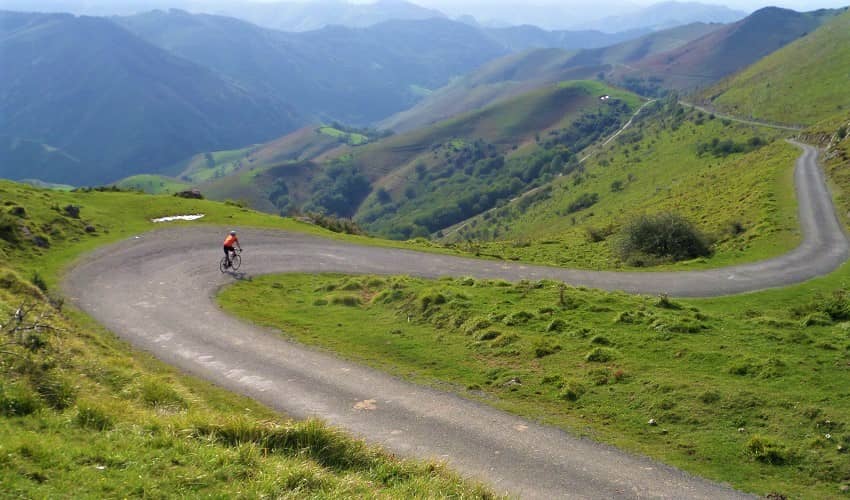
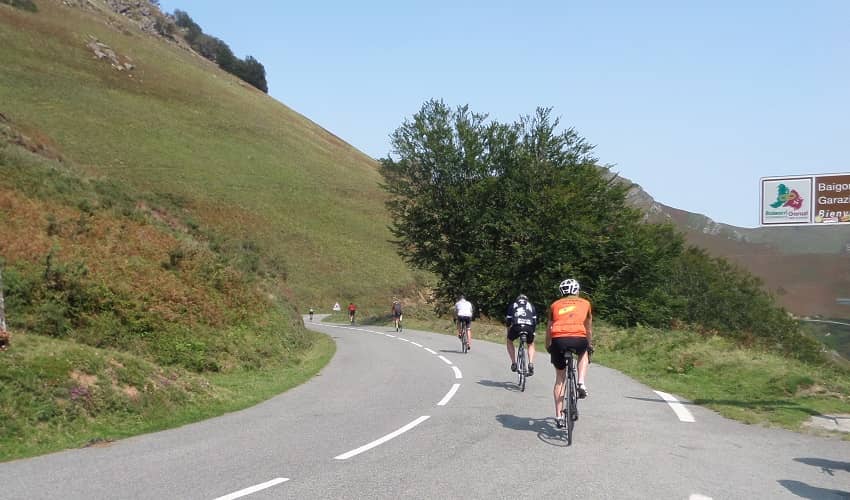
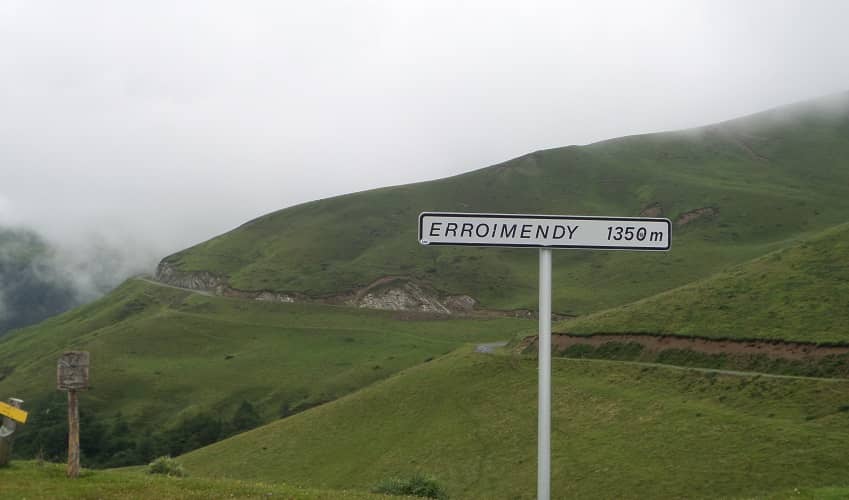
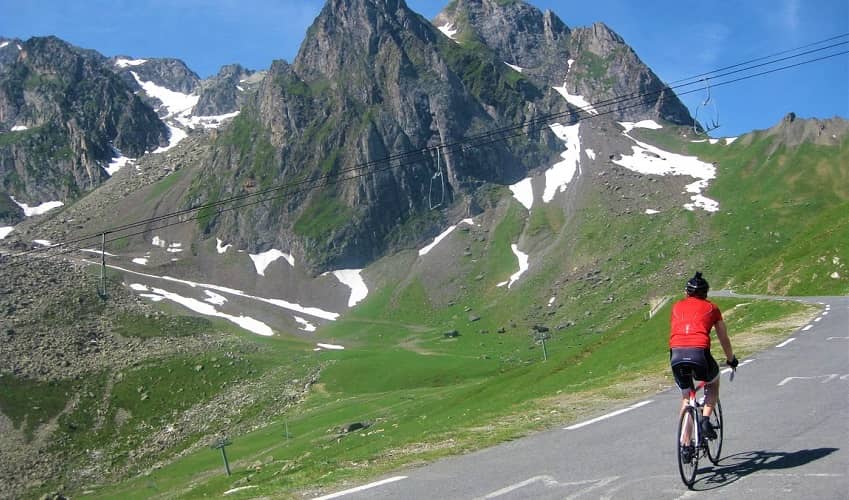
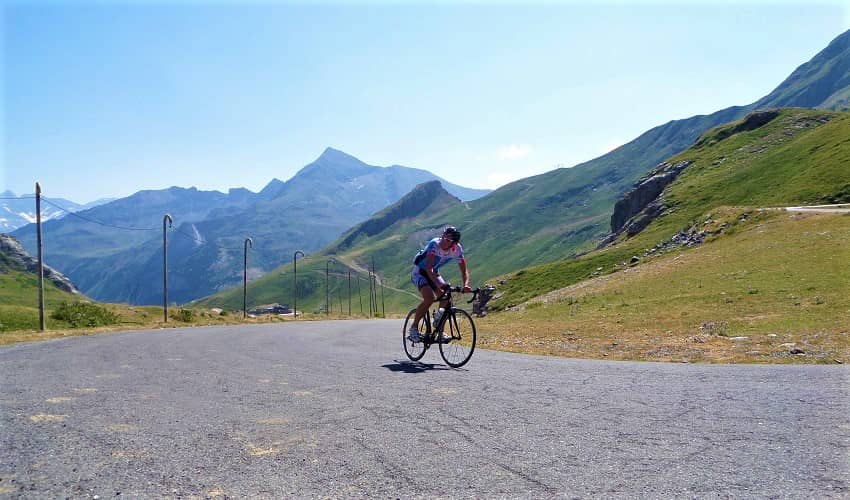
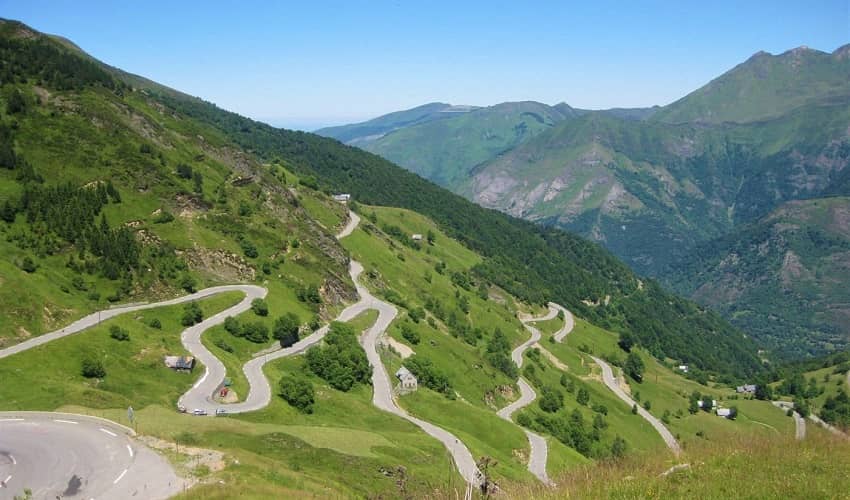
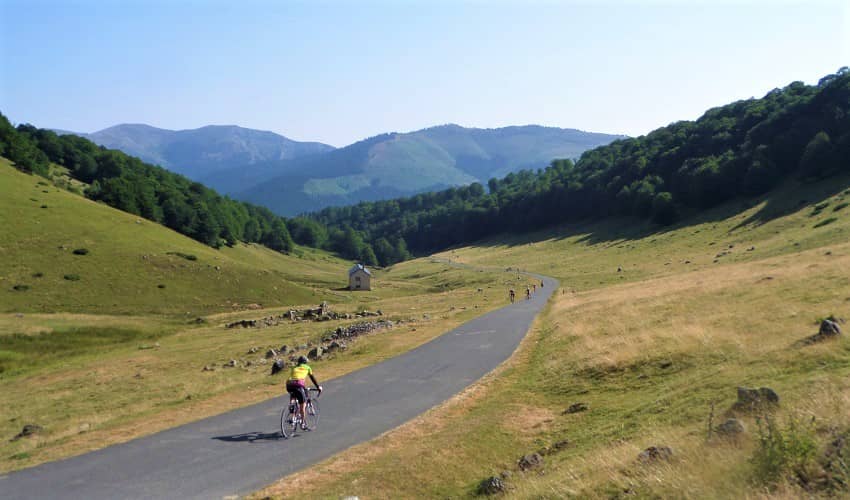
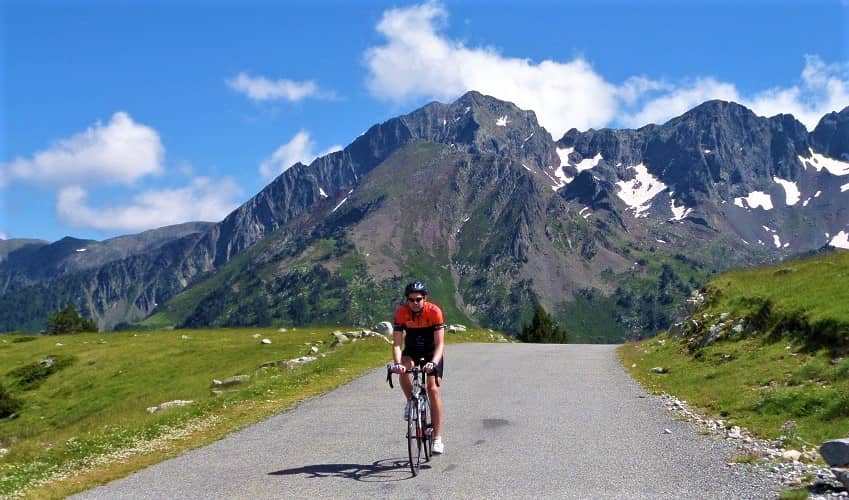
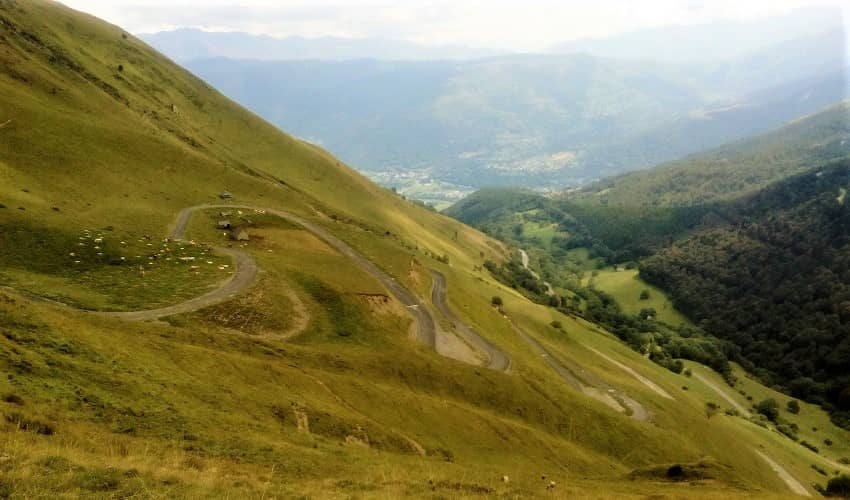
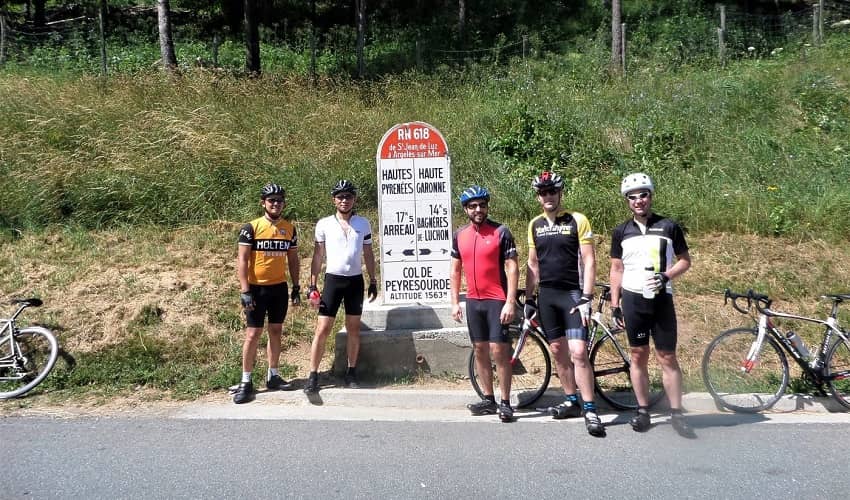
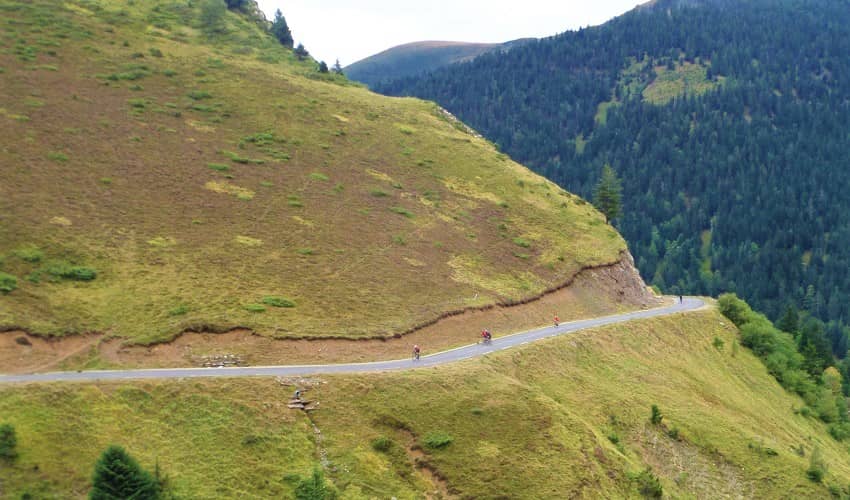
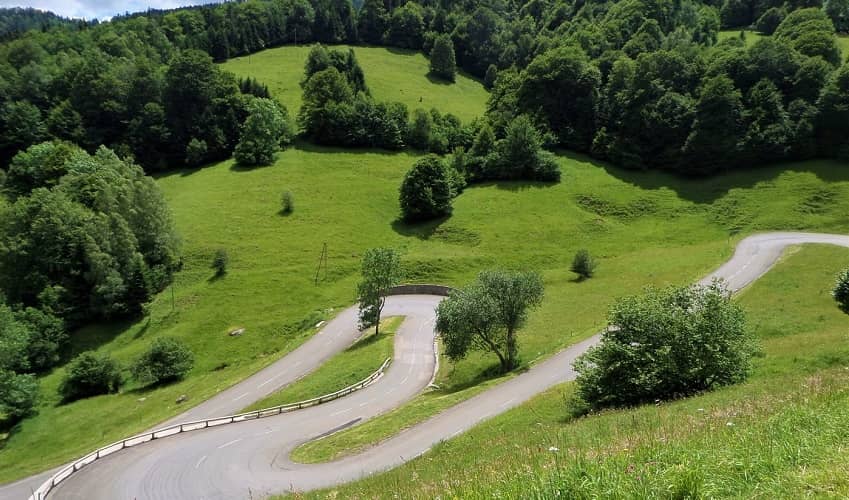
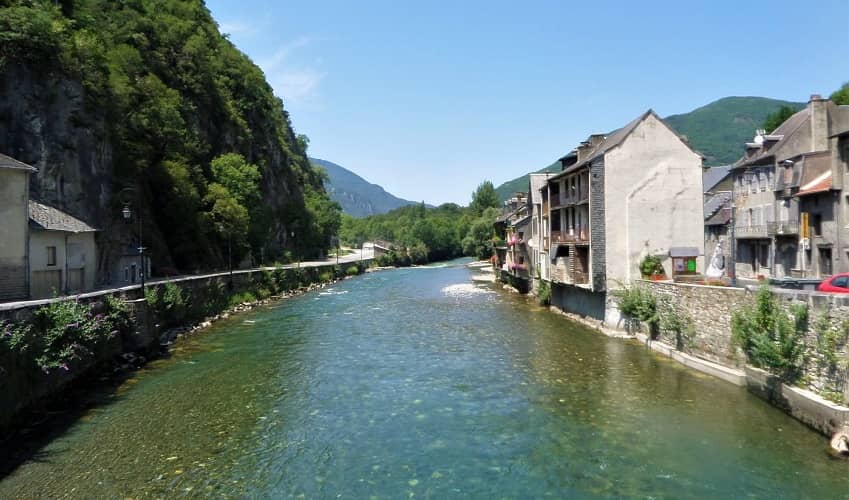
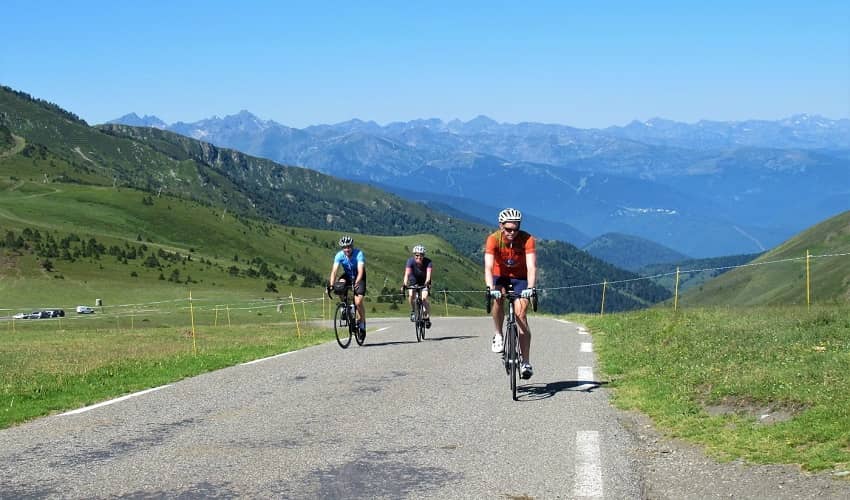
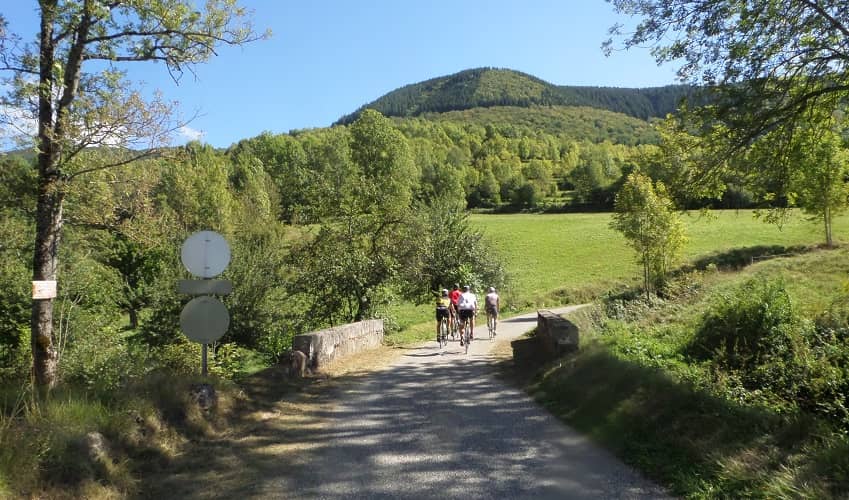
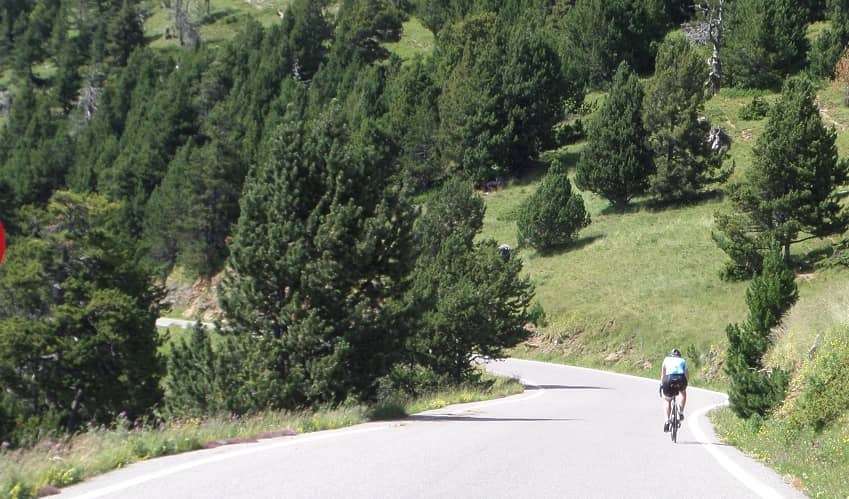
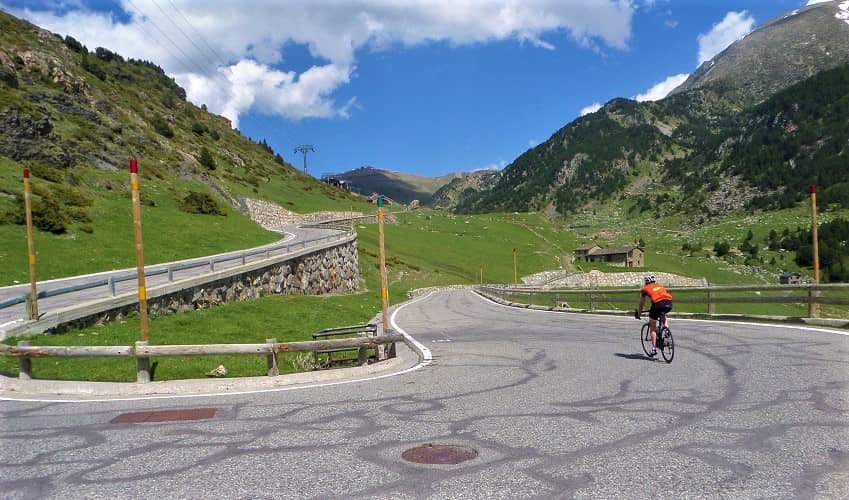
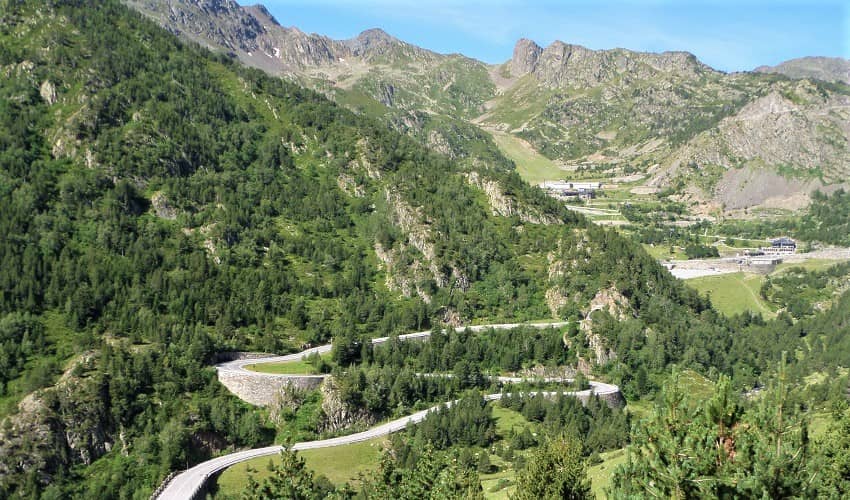
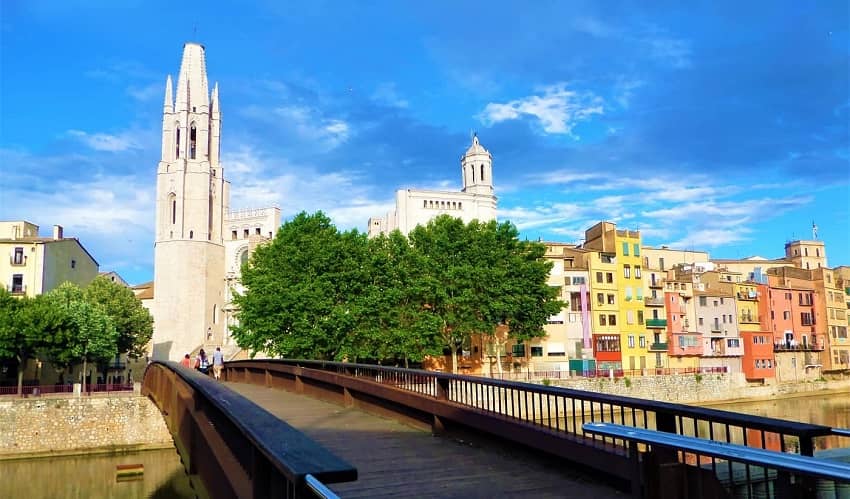
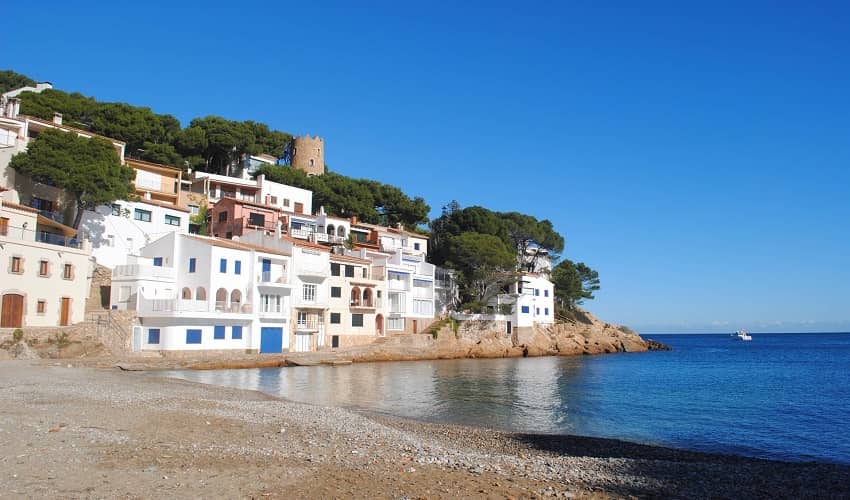
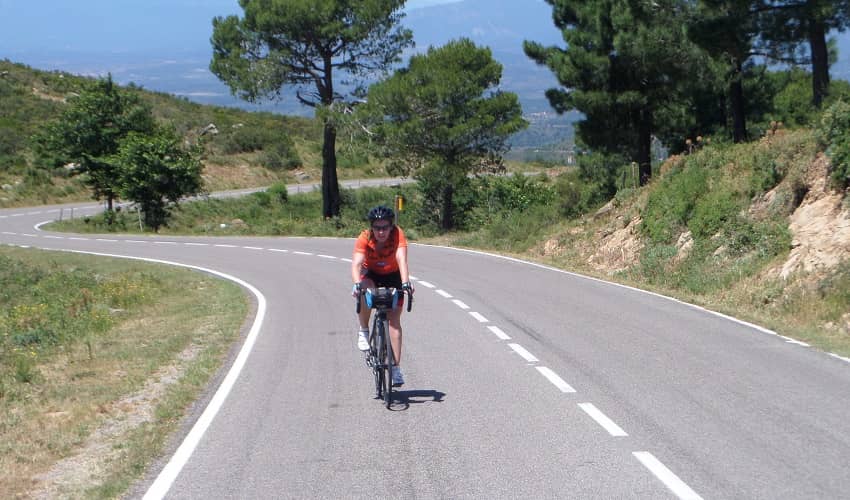
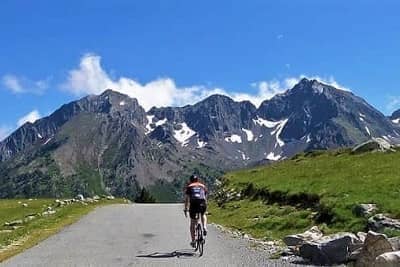
 France
France
